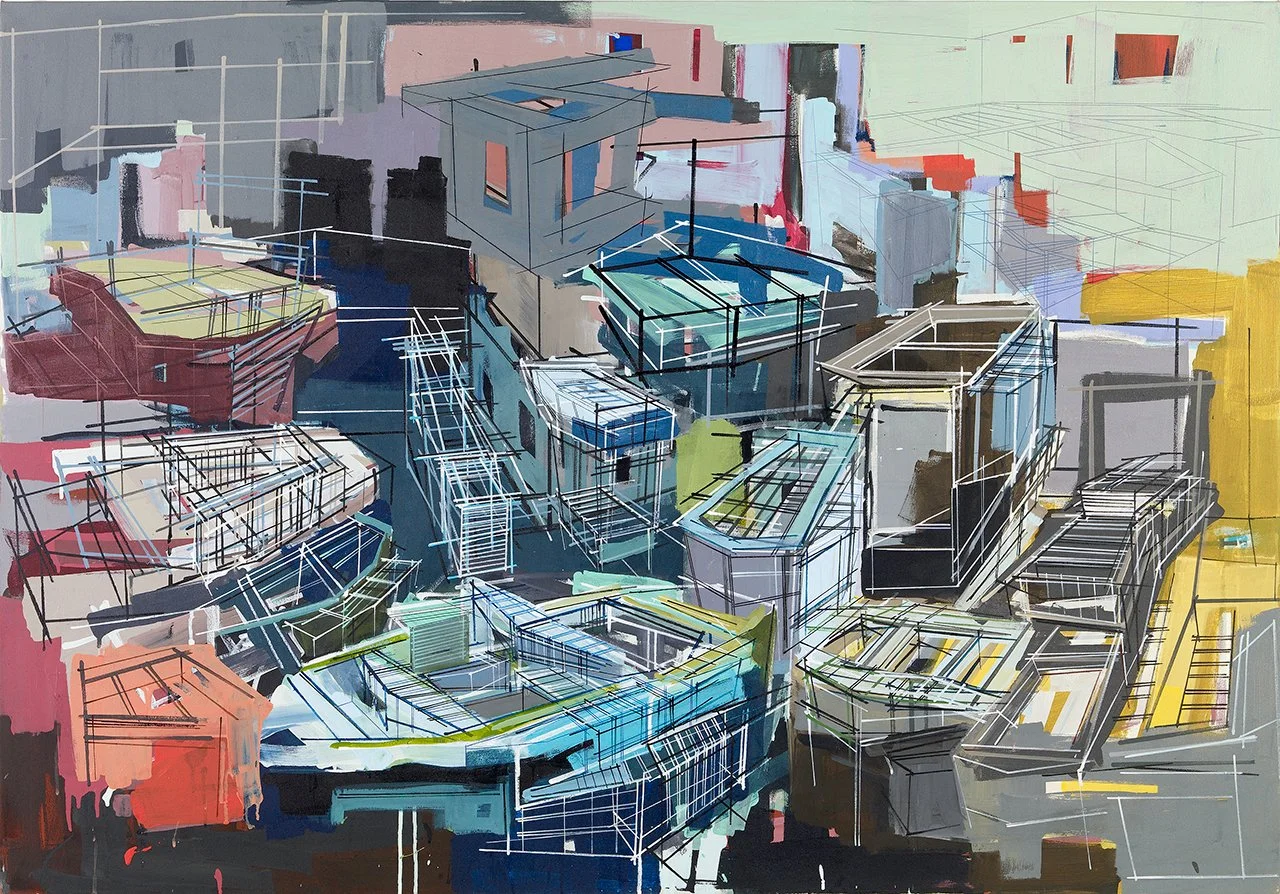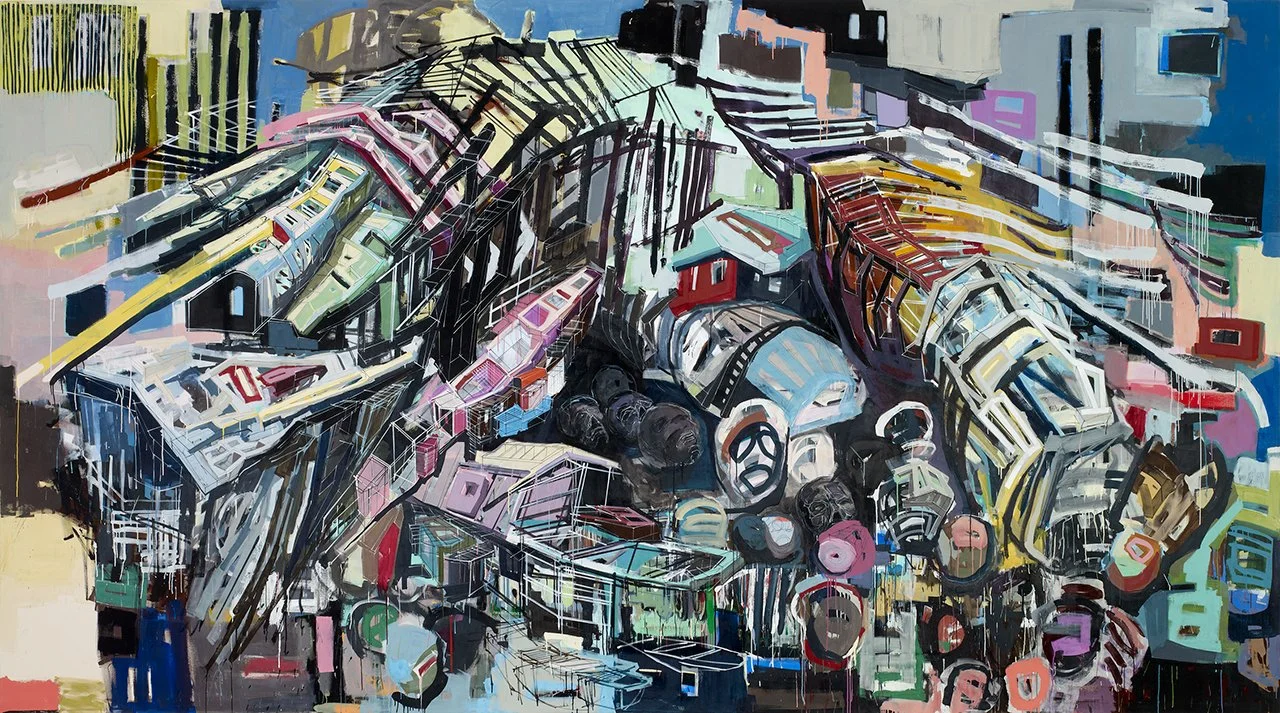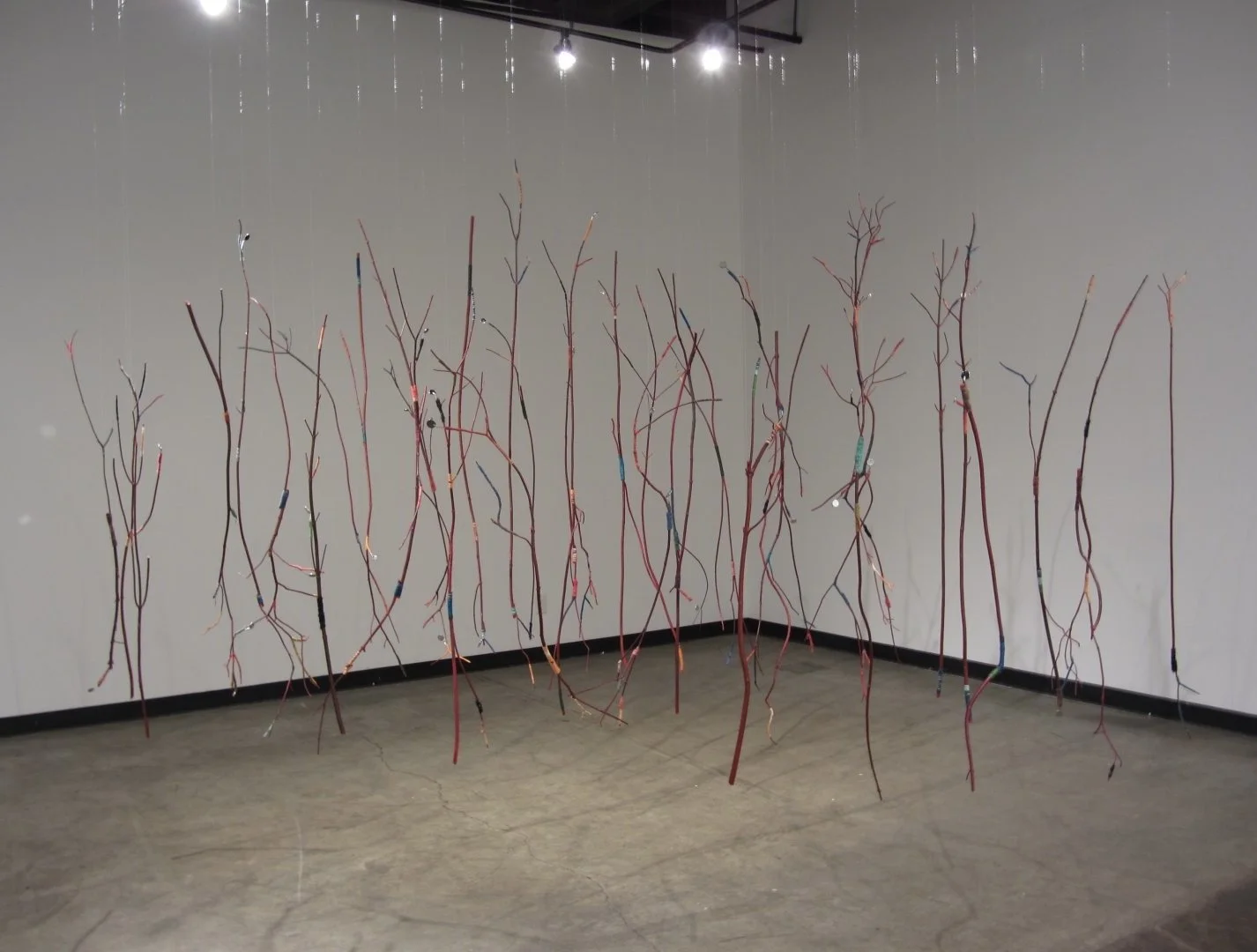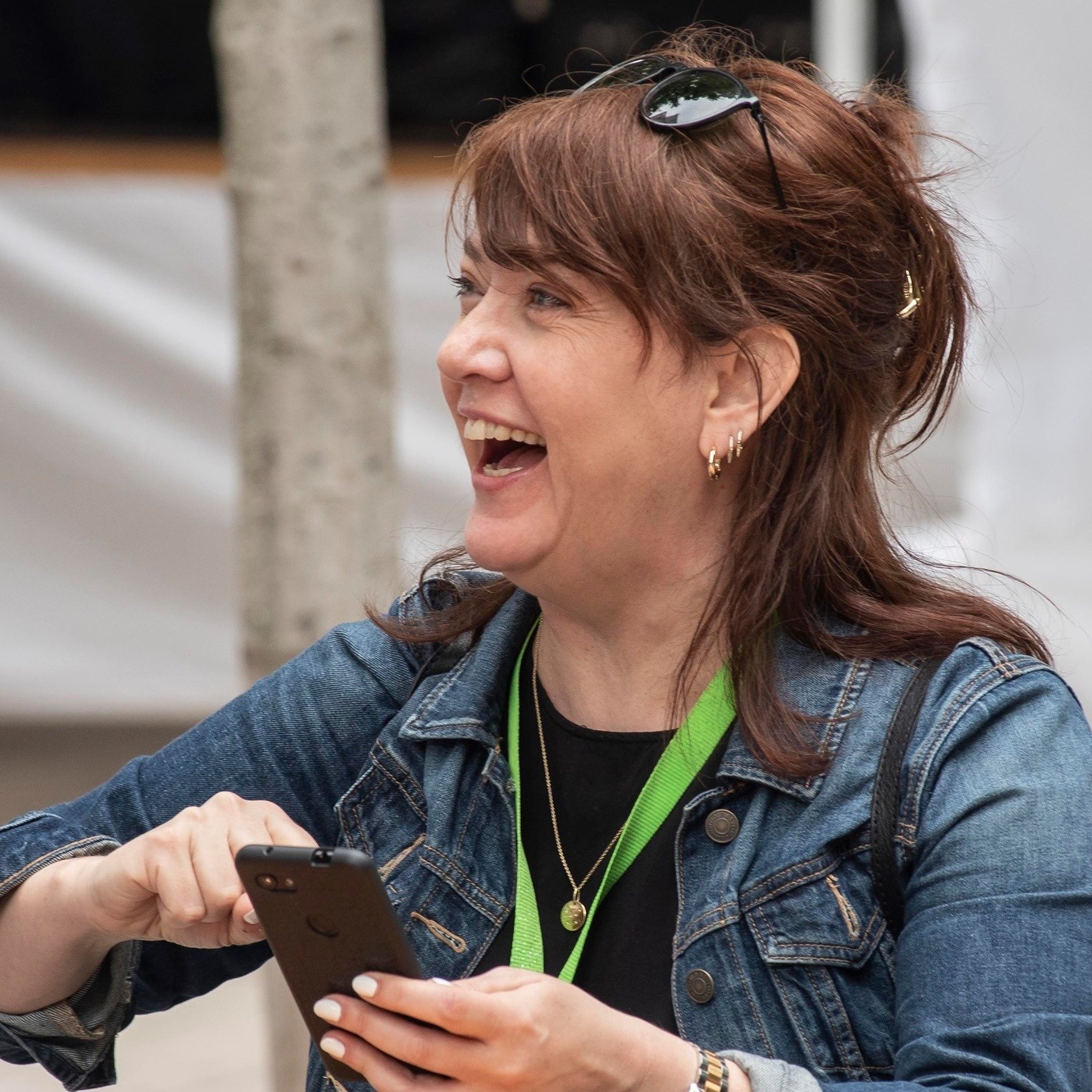Denyse Thomasos: just beyond exhibit brings the personal and political to grand-scale painting
In Vancouver Art Gallery retrospective, late Trinidadian-Canadian’s semi-abstract canvases allude to slavery, mass incarceration, and housing projects
Denyse Thomasos’s Excavations: Courtyards in Surveillance, 2007, from the collection of Bob Harding, the Estate of Denyse Thomasos, Olga Korper Gallery. Photo by Michael Cullen
Vancouver Art Gallery presents Denyse Thomasos: just beyond to March 24, 2024
A GIANT IMAGE of a young woman, highlighted by golden hues, sternly staring down the viewer, greets visitors as they enter the new Denyse Thomasos: just beyond exhibit at the Vancouver Art Gallery. The untitled self-portrait was made in the mid ’80s, at the beginning of Thomasos’s art career as a student, as this retrospective exhibit showcases the gifted Trindadian-Canadian’s works from those early days through to her untimely death in 2012.
The exhibit showcases more than 70 pieces of the undersung artist’s works and personal items tied to her art, some never before seen by the public, including her sketchbook, paintings she made right before she passed away, and even the clogs she wore while creating her art.
Organized by Toronto’s Art Gallery of Ontario and Saskatoon’s Remai Modern, this career overview was curated by Michelle Jacques, Sally Frater, and Renée van der Avoird.
“I was constantly being told that painting couldn't be political, and that a good painting wasn't political. Denyse really changed and challenged that,” Jacques, who personally knew Thomasos, tells Stir.
The unique contemporary art Thomasos produced throughout her career introduced and challenged the idea at the time that art should not be political. Working in her own personal experiences and political stances as a Trindadian-Canadian, her art takes vibrant semi-abstract form in her large-scale paintings. She took a major interest in portraying mass incarceration and confinement, incorporating pops of colour and architectural motifs from prisons, cages, boats, and low-income tenements. In 2007’s Excavations: Courtyards in Surveillance, Thomasos highlights the theme of lack of space and confinement by playing with fine lines to create crate-like images stacked upon one another in abstract repetition.
“She was making sense of her own experience of diaspora and migration and movement in a very broad way—but also politics and geographic history,” Frater tells Stir. “As a Black person, she was interested in the transatlantic slave trade. This was something that encompassed the three regions that she lived in, both Trinidad and the Caribbean, as well as Canada and the U.S.”
Denyse Thomasos’s Arc, 2009, Art Gallery of Ontario, the Estate of Denyse Thomasos, Olga Korper Gallery. Photo by Michael Cullen
The exhibit takes gallery visitors on a journey, showing how Thomasos went from her early style in the 1980s, such as Sacrifice and Untitled (Interior with Figures), which incorporated a muted colour palette, to the vibrantly hued brushwork of her later work, such as Maiden Fight.
Despite the decade gaps and shift in Thomasos's style, her work’s central theme commented on historical and current political injustices throughout her career. One of her earlier pieces, 1989’s Sacrifice, a commentary on slavery, uses a grim, dark palette, and literal depictions to show entrapment and death, illustrating numerous skulls beneath a horse strung up in a sling, human skulls cascading out of a cell with a small window to daylight. Compared to her later work, such as 1998’s Dismantle #2, which incorporated colourful crates mimicking one another and stacked one on top of the other, she is consciously depicting entrapment in a less literal way.
“Her movement into abstraction began in her grad school years at Yale,” Frater explains. “Refraining from depicting the figure, she was kind of disrupting this association between suffering and the Black body. When you're standing in front of her work as a viewer, you're kind of thinking about your own relationship to the space. So it's not that you would need to see a Black person who is in prison or in chains, to conjure up how constricting that would be. Whoever you are and whatever your experience is, whatever your background is, you're positioned within that space.”
What makes this retrospective exhibit so unique is how personal it is. From home videos of Thomasos painting in her studio to paint-splattered circular containers that stored the paint she used, this curation gives a glimpse into not only what kind of artist she was, but who she was as a person.
“When the exhibition launched in Toronto, because that was a hometown of sorts for Denyse, there were so many people there, from her former instructor to her studio assistant,” Frater says. “Everyone has a story. Regardless of where you go, everyone has a story about an encounter with Denyse. What has been consistent in everyone's retelling is what a force she was, like how forceful she was, how determined she was, how certain of herself she was, how disciplined she was.”
Rest assured that online pictures do not do these works justice. To understand the huge scale and grandness that Thomasos brought to her craft, art lovers must visit these paintings in person. Standing at 11-by-20-feet tall, Arc is a monumental work that will leave the viewer speechless as they take it in. Creating a chaotic, dizzying puzzle, the imagery blends mounds of abstracted human skulls, ship hulls, decaying industrial buildings, ladders, bars, and other structures, all splashed onto one emotionally powerful, thematically complex, time-crossing canvas.
Vancouver Art Gallery will be the second stop of this travelling exhibition, with the Art Gallery of Ontario being the first. The exhibition is a chance to see works as formally interesting for their repeating abstract patterns as they are thought-provoking meditations on the roots of systemic racism. This show is a must-see, giving well-deserved recognition to a visionary painter who is finally getting her due.















